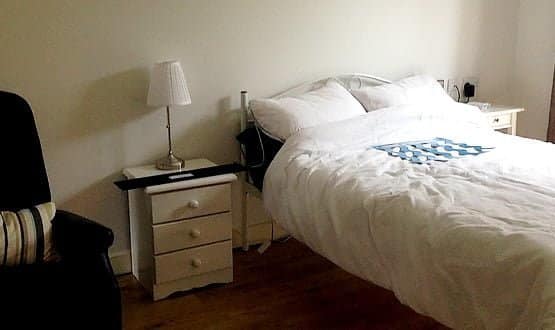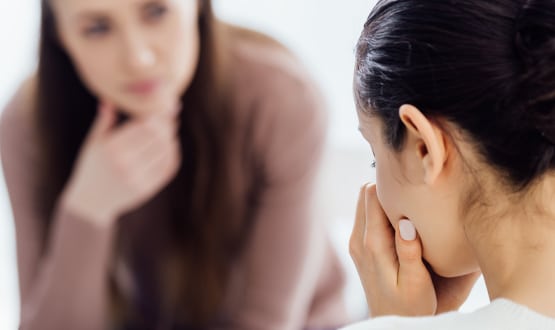Tech city, Dundalk style
- 3 April 2014

The Great Northern Haven apartment building in Dundalk, Ireland may look like any other modern block of flats; but never judge a building by its appearance.
Inside, each of the 16 flats are fitted with more than 100 sensors to monitor the well-being of the residents.
Why? Because Ireland is one of 22 countries taking part in the World Health Organization’s ‘Age-friendly Cities and Communities’ programme, which aims to do exactly what it says on the tin: make life easier and better for older people.
From cave to home
Great Northern Haven is the flagship project for County Louth, run by the Netwell Centre and CASALA research centres at the Dundalk Institute of Technology.
Rodd Bond, the director of the Netwell Centre, says that when Ireland became part of the WHO programme, the agenda was “screaming out for a delivery mechanism” that would both test out the technology and support those using it.
“Old people’s empowerment is hugely important. We got to put them in the centre of our thinking to be able to do this,” he says.
“We created an ‘old people forum’ to have them work with us to create the tech and design. For us, it brings together what historically would operate in silos.”
The apartments and sensors are designed in a 3D CAVE (Cave Automatic Virtual Environment, or cube-shaped room with a 3D immersive virtual reality system), at the institute, so the project can respond to changing needs and new ideas.
“We know there’s going to be a lot of new technology over the next 15 years and we wanted to have a place where we could integrate all these pieces and understand them and get them tested by real people living in real houses,” says Bond. “The physical environment and tech together has created something that’s quite unique.”
The examined life
The residents of Great Northern Haven moved into their apartments in June 2010, and since then their movements and behaviour have been monitored by researchers.
Aged between 62 and 89, they have a range of illnesses from diabetes and stroke to depression and bipolar disorder.
Inside one of the flats, Dr Julie Doyle, a human-computer interaction specialist at CASALA, shows off a flat screen television showing in which rooms the lights are on, whether a window is open, and whether anyone is in the room.
“There are about 100 sensors in the apartment and about 2,000 in the complex. There are two aspects: long term behaviour and short term emergencies. For example, movement sensors can show if someone has a fall,” she says.
“The sensors are hooked up to a monitoring service 24/7. If you open the window it will show on the screen. If the fridge is open that, too, will show up. There are sensors that monitor electricity, monitor the temperature and we have underfloor heating in the apartments.”
In the master bedroom there are also sensors. In the bed is a mattress sensor that monitors heart rate, movement patterns and bed activity. If a person gets up in the middle of the night to go to the bathroom and doesn’t come back for a while, an alert will go off.
Similarly, if the sensors detect that a resident has taken a fall, a text message can be sent to a relative or an alert can be sent to the triaging centre. There staff can escalate the alert to the emergency services if they can’t get hold of the resident.
The latest iPad apps
Dr Doyle says that the residents are also equipped with iPads and a well-being app to monitor and look at their personal health, which they are using “to varying degrees”.
“We got a wellness app where people report their sleep and how they’re feeling. They can look at how their readings compare to last week’s results. We also give them educational advice and feedback on the app,” she says.
The data from the app goes back to the research lab and in some cases back to the GP as part of an ‘early discharge plan’.
“As well as using the apps they take their blood pressure and weight with a couple of devices that link up with the iPad. It’s used with a different app at the moment but we’re looking to put it into the same wellbeing app,” adds Dr Doyle.
When asked if the residents have any trouble using the iPad, she explains that she has run an iPad course every Friday for the past two years, and now the residents are teaching her about the latest apps.
Thinking Japanese
In June last year, Fujitsu came on board and partnered with CASALA, as well as two other research institutions: TRIL and CLARITY, to launch a three year, €3m research project called Kiduku.
Kiduku means “to be aware” and “to construct” in Japanese, which is exactly what the project looks to do.
It aims to monitor and prevent falls risks by placing sensors on the patients bodies in their own homes, as well as using one of the smart-apartments where patients will stay over a week-long period and be constantly monitored.
The sensors will be used to collect physiological, psychological, physical and social information.
Fujitsu’s aim is to ultimately construct a “knowledge platform” that provides services to help patients gain a “heightened sense of awareness” and to build senior citizen oriented systems and technology.
More work ahead
At the Synge Unit at the Mater Hospital in Dublin, two hospital clinicians, Dr Dermot Power and Dr Brian Caulfield are leading a pilot project with their patients, monitoring their falls risks by placing a monitor on their ankle. They are also a part of Fujitsu’s project and are on the verge of beginning the pilot.
“If a person has difficulty walking, we want to capture the time when their walking pattern changes and look at what leads to this change. Then we can figure out what causes it and deal with that,” says Dr Power, a geriatrician at the hospital. “It is about understanding what causes people to fall.”
Fujitsu’s research project has gained a lot of traction in Ireland and it is thought the project will make it easy for information to be shared among patients and their family members, GPs and specialists.
However, the impact of using these sensors on older people is difficult to quantify in terms of cost-savings and reducing hospital admissions as it is still in early days of the research.
Back at the smart apartments, Dr Doyle said that the same people have lived here for four years without having to go into care homes, which could be an indicator of the sensors making a difference.
She tells the story of one of the residents who ended up in hospital with a heart condition. When the researchers looked at his data retrospectively, they noticed that there was more night-time activity in the weeks leading up to him being hospitalised.
“We still trying to make sense of the data and looking back but we want to start doing it more proactively so we can use the data,” she adds.




